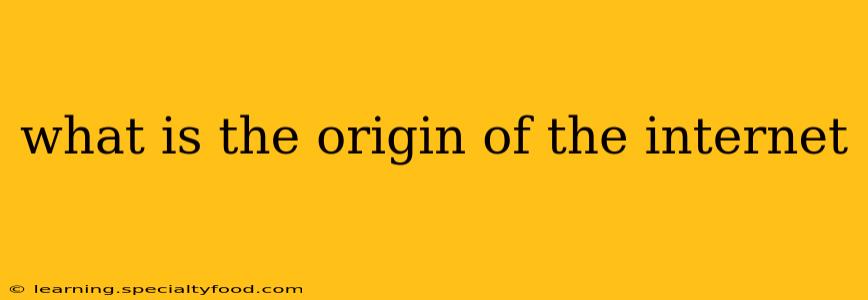The internet, a ubiquitous force in modern life, didn't spring into existence overnight. Its story is a fascinating tapestry woven from Cold War anxieties, academic collaboration, and technological innovation. Understanding its origins reveals a surprisingly complex and layered history.
What were the earliest forms of the internet?
The seeds of the internet were sown long before the World Wide Web. The initial concept emerged from the desire to create a decentralized communication network resilient to attack. In the late 1960s, during the height of the Cold War, the US Department of Defense's Advanced Research Projects Agency (ARPA) funded the creation of ARPANET, considered by many to be the precursor to the internet. This network connected computers at different research institutions, allowing researchers to share data and collaborate even if one part of the network was compromised. This early form relied on packet switching, a groundbreaking technology that broke down data into smaller packets for efficient transmission across multiple routes.
How did ARPANET evolve into the internet we know today?
ARPANET's success spurred further development. Throughout the 1970s and 80s, various networks were created, each with its own protocols and standards. The challenge became how to connect these disparate networks. The solution came in the form of the Transmission Control Protocol/Internet Protocol (TCP/IP). Adopted as a standard in 1983, TCP/IP allowed different networks to communicate seamlessly, paving the way for the interconnected network we know as the internet.
Who invented the internet?
There's no single inventor of the internet. Its creation was a collaborative effort involving numerous scientists, engineers, and researchers. Key figures include:
- Paul Baran: Developed the concept of packet switching, a fundamental element of the internet's architecture.
- Vinton Cerf and Robert Kahn: Developed TCP/IP, the communication protocol that enabled different networks to interconnect.
- Robert Taylor: Played a crucial role in the creation of ARPANET, fostering collaboration and securing funding.
Many others contributed significantly to its development, making it a truly collaborative achievement.
Was the internet originally intended for public use?
No, ARPANET and its early successors were primarily designed for research and academic purposes. The idea of a globally accessible public internet wasn't initially part of the plan. The shift towards public accessibility happened gradually, with the introduction of the World Wide Web in the late 1980s and early 1990s playing a crucial role. The development of user-friendly browsers like Mosaic further accelerated the internet's adoption by the general public.
When did the internet become publicly available?
The internet's transition to public use was a gradual process. While ARPANET itself remained restricted, the interconnected networks that grew from it gradually became more accessible. The widespread availability of the World Wide Web in the mid-1990s marked a significant turning point, opening the door for mass adoption and transforming it into the globally connected network we know today.
What is the difference between the internet and the World Wide Web?
This is a crucial distinction. The internet is the underlying global network of interconnected computer networks. The World Wide Web is a service that runs on the internet. It uses the internet's infrastructure to deliver web pages, images, and other content via HTTP (Hypertext Transfer Protocol). Think of the internet as the highway system, and the World Wide Web as the cars and trucks using that system to transport information.
The origin of the internet is a complex story of innovation, collaboration, and unforeseen consequences. From its humble beginnings as a Cold War research project to its current status as a global communication backbone, the internet's journey continues to shape our world in profound ways.
